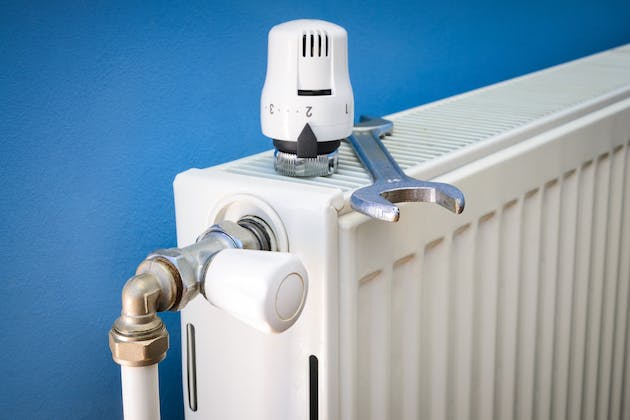There aren't many moving components on a contemporary radiator or towel rail, but they're all crucial. The valves that connect the hot water pipes to the radiator are often the only moving parts on the radiator. You may have heard of TRV, Manual, and Lockshield valves, and in this blog post, we explain what they are.
TRVs (Thermostatic Radiator Valves)
In-office and apartment buildings, thermostatic radiator valves (TRVs) are utilised to deliver zonal heating from a central boiler. The TRV, which has a temperature sensor, will automatically regulate the heat output from the radiator to assist maintain a consistent room temperature. The TRV can be angled or straight depending on how it is attached to the radiator, and they can be beautiful, fashioned in antique brass, copper, or nickel.

Lockshield Valves
To balance the output of your heating system, adjust the lockshield valve on the side of the radiator opposite the on/off valve. The lockshield is a plastic covering that covers the valve to prevent you from mistakenly changing the setting once you've modified it. Heat output balancing is a reasonably straightforward procedure that you should be able to execute. If we are unsure, we will advise you.
Manual radiator controls
The manual valve regulates the flow of water into the radiator to maintain a steady level of heat. You must manually regulate the heat by rotating the valve. The manual valve is smaller and more discrete than the TRV and can be slanted or straight depending on how it must be attached to the radiator. Evolve manual valves start at less than £250.
Radiator Valves
Radiator valves come in a variety of forms to accommodate different types of radiators and pipe construction. You can, for example, purchase angled radiator valves, corner valves, h block valves, and straight valves. Angled valves allow pipes to be connected to the radiator at a 90-degree angle from the floor or wall. When the piping enters the room horizontally, straight radiator valves are employed. Different valves are utilised to meet your specific needs, but these are the most typical ones used in home heating systems. You must choose the appropriate valves for your radiator type and pipes.
Smart radiators
You can also get smart radiator valves that are part of a 'smart home' and allow you more control over your heating. You may also acquire smart room thermostats that link to your wifi and can be controlled by a laptop, tablet, or smartphone. Home automation has grown in popularity in recent years because it may help you save money on your heating expenses. The good news is that these systems are designed to operate with classic radiators, small radiators, and sophisticated designer radiators.

Self-bleeding radiator valves and air vents
This little valve allows air to leave the central heating system. It can be seen on water radiators or pipes leading to radiators. Trapped air forces your radiator to work harder to maintain the desired temperature, and it may also cause your pipes to corrode more quickly.
Horizontal and vertical designer radiators
The main distinction between horizontal and vertical radiators of the same type is purely aesthetic: vertical radiators are taller than wide – and thus better in a small room – whereas horizontal radiators are wider than taller – and thus easier to hide behind furniture for a minimalist home decor design. These radiators come in a variety of materials, including stainless steel and, in certain cases, aluminium. The radiator connections on both types of radiators are typically the same, with side inlets that link to the valves.
Get in touch for a radiator installation today
If you'd like to enquire about a new radiator, then you can reach us via our phone number on, 07875 344794 or simply by sending us an email at, elementsheatinginstallations@gmail.com.



